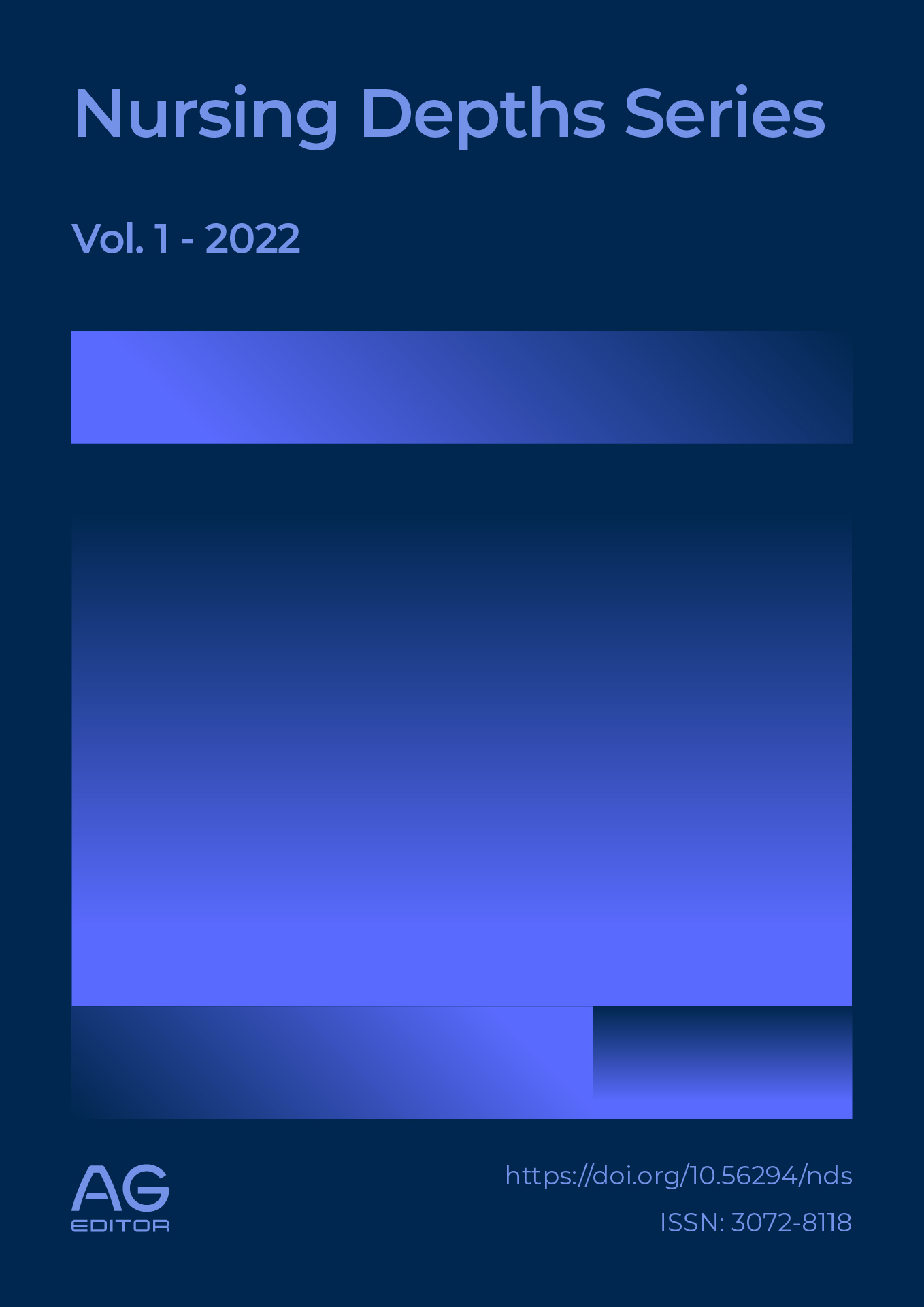Total family risk in families with children under 5 years old in a vulnerable area of North Lima
DOI:
https://doi.org/10.56294/nds202219Keywords:
Family, Family relations, Public health, CoronavirusAbstract
Family risk is one of the probabilities in which adverse situations can occur within the family that can be witnessed during a family assessment, therefore, the research objective is to determine the total family risk of families with children under 5 years of age in a vulnerable area of North Lima. It is a quantitative, descriptive-cross-sectional study, with a total population made up of 140 heads of households with children under 5 years of age who answered a questionnaire of sociodemographic aspects and the total family risk instrument. In the results, it can be observed that 62.9% (n = 88) of the heads of households have a family at low risk, 27.1% (n = 38) have threatened families and 10% (n = 14) have families at high risk. In conclusion, strengthening health professionals in terms of extramural work is very important because it allows them to identify if there is any risk that compromises the family, especially the infant, and to act accordingly.
References
[1] Organización Mundial de la Salud, “Coronavirus,” OMS, 2020. https://www.who.int/es/health-topics/coronavirus#tab=tab_1.
[2] Johns Hopkins University, “Coronavirus Resource Center,” JHU, 2022. https://coronavirus.jhu.edu/map.html.
[3] World Health Organization, “Managing family risk: a facilitator’s toolbox for empowering families to manage risk during COVID-19,” OMS, 2021. https://www.who.int/publications/m/item/managing-family-risk-a-facilitator-s-toolbox-for-empowering-families-to-manage-risks-during-covid-19.
[4] H. Prime, M. Wade, and D. Browne, “Risk and resilience in family well-being during the COVID-19 pandemic,” Am. Psychol., vol. 75, no. 5, pp. 631–643, 2020, doi: 10.1037/amp0000660. DOI: https://doi.org/10.1037/amp0000660
[5] H. Matta, R. Perez, E. Matta, and M. Yauri, “Total family risk in families who go to popular dining rooms in a vulnerable area of collique, comas,” Rev. ASTES, vol. 5, no. 5, pp. 960–965, 2020, [Online]. Available: https://www.astesj.com/publications/ASTESJ_0505117.pdf. DOI: https://doi.org/10.25046/aj0505117
[6] M. Morelli et al., “Parents and Children During the COVID-19 Lockdown: The Influence of Parenting Distress and Parenting Self-Efficacy on Children’s Emotional Well-Being,” Front. Psychol., vol. 11, no. 11, p. 584645, 2020, doi: 10.3389/fpsyg.2020.584645. DOI: https://doi.org/10.3389/fpsyg.2020.584645
[7] C. Vélez, D. Betancurth, and C. Gallego, “Vista de Determinantes sociales de la salud y riesgo familiar en población de dos municipios de Caldas,” Rev. Investig. Andin., vol. 22, no. 40, pp. 153–164, 2020, [Online]. Available: https://revia.areandina.edu.co/index.php/IA/article/view/1592/1527. DOI: https://doi.org/10.33132/01248146.1592
[8] F. Sticca, C. Wustmann, and O. Gasser, “Familial Risk Factors and Emotional Problems in Early Childhood: The Promotive and Protective Role of Children’s Self-Efficacy and Self-Concept,” Front. Psychol., vol. 11, no. 11, p. 547368, 2020, doi: 10.3389/fpsyg.2020.547368. DOI: https://doi.org/10.3389/fpsyg.2020.547368
[9] I. Schoon and G. Melis, “Intergenerational transmission of family adversity: Examining constellations of risk factors,” PLoS One, vol. 14, no. 4, p. e0214801, 2019, doi: 10.1371/journal.pone.0214801. DOI: https://doi.org/10.1371/journal.pone.0214801
[10] L. Matta, “Riesgo y dinámica familiar en familias con menores de 5 años de una zona vulnerable de Comas,” Rev. Cuid. y Salud Pública, vol. 1, no. 1, pp. 52–58, 2021, doi: 10.53684/csp.v1i1.13. DOI: https://doi.org/10.53684/csp.v1i1.13
[11] M. Guzman, “Riesgo Familiar Total durante la Pandemia por Coronavirus en Familias que reciben Asistencia Alimentaria en Carabayllo,” Rev. Investig. Agora, vol. 8, no. 2, pp. 40–46, 2021, [Online]. Available: https://www.revistaagora.com/index.php/cieUMA/article/view/191/142. DOI: https://doi.org/10.21679/arc.v8i2.217
[12] C. Fernández and P. Baptista, “Metodología de la Investigación.” p. 634, 2015, [Online]. Available: http://observatorio.epacartagena.gov.co/wp-content/uploads/2017/08/metodologia-de-la-investigacion-sexta-edicion.compressed.pdf.
[13] P. Amaya, “Instrumento de riesgo familiar total: RFT:5-33: manual. Aspectos teóricos, psicométricos, de estandarización y de aplicación del instrumento.” 2004, [Online]. Available: https://observatoriodefamilia.dnp.gov.co/Documents/Publicaciones externas/Salud/3-manual-rft--pilar-a(salud).pdf.
[14] M. Ekholuenetale, A. Wegbom, G. Tudeme, and A. Onikan, “Household factors associated with infant and under-five mortality in sub-Saharan Africa countries,” Int. J. Child Care Educ. Policy, vol. 14, no. 10, pp. 1–15, 2020, doi: 10.1186/s40723-020-00075-1. DOI: https://doi.org/10.1186/s40723-020-00075-1
[15] L. Arantes, C. Veloso, M. de Campos, J. Coelho, and G. Tarro, “The potential impact of the COVID-19 pandemic on child growth and development: a systematic review,” J. Pediatr. (Rio. J)., vol. 97, no. 4, pp. 369–377, 2021, doi: 10.1016/j.jped.2020.08.008. DOI: https://doi.org/10.1016/j.jped.2020.08.008
[16] M. Ahmed, O. Ahmed, Z. Aibao, S. Hanbin, L. Siyu, and A. Ahmad, “Epidemic of COVID-19 in China and associated Psychological Problems,” Asian J. Psychiatr., vol. 51, no. 3, p. 102092, 2020, doi: 10.1016/j.ajp.2020.102092. DOI: https://doi.org/10.1016/j.ajp.2020.102092
Published
Issue
Section
License
Copyright (c) 2022 Jorge Arturo Zapana-Ruiz, Susan Gutiérrez-Rodríguez (Author)

This work is licensed under a Creative Commons Attribution 4.0 International License.
The article is distributed under the Creative Commons Attribution 4.0 License. Unless otherwise stated, associated published material is distributed under the same licence.






